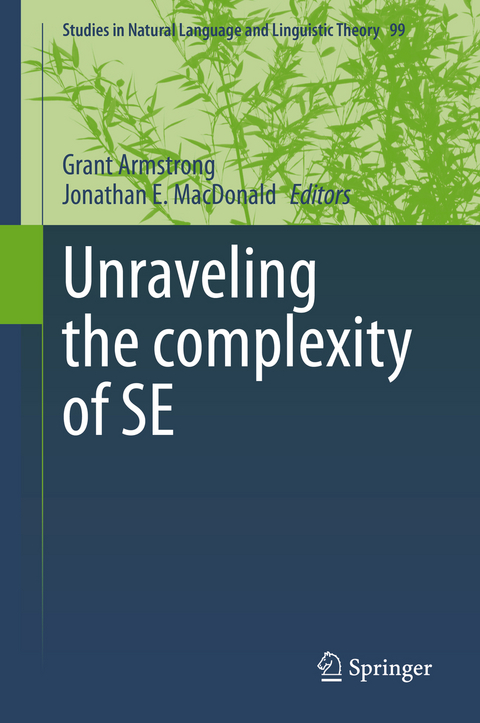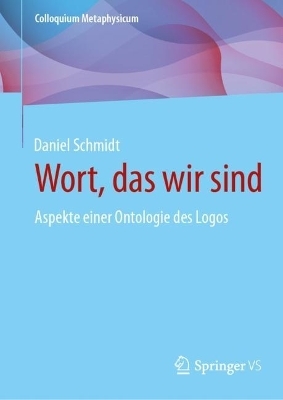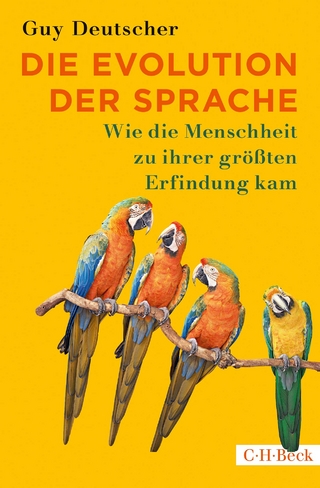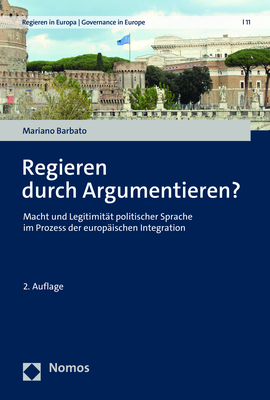
Unraveling the complexity of SE
Springer International Publishing (Verlag)
978-3-030-57003-3 (ISBN)
This book makes a novel contribution to our understanding of Romance SE constructions by combining both diachronic and synchronic theoretical perspectives along with a range of empirical data from different languages and dialects.
The collection, divided into four sections, proposes that SE constructions may be divided into one class that is the result of grammaticalization of a reflexive pronoun up the syntactic tree, from Voice and above, and another class that has resulted from the reanalysis of reflexive and anticausative morphemes as an argument expletive or verbal morpheme generated in positions from Voice and below. The contributions, while varied in both empirical content and theoretical approach, all serve to highlight different aspects of the overarching idea that SE constructions have evolved from these two distinct grammaticalization paths.
The book appeals to researchers and academics in the field and closes with a unified approach to various SE constructions that makes important use of its status as a verbal morpheme. In addition to aligning a novel string of empirical contributions under a new theoretical umbrella, a clear research direction emerges from this volume based on the morphosyntactic nature of SE itself: Is it a clitic, an agreement morpheme, or a verbal morpheme?
Grant Armstrong is an Associate Professor of Spanish Linguistics at the University of Wisconsin-Madison. His research is focused on the Morphology and Syntax of Spanish and Mayan languages. He has published numerous articles on these topics in journals such as The Linguistic Review, Probus, Studies in Hispanic & Lusophone Linguistics and as chapter contributions to edited volumes in series' published by Oxford University Press, Cambridge University Press, John Benjamins, and Springer.
Jonathan E. MacDonald is Associate Professor of Linguistics and of Spanish & Portuguese at the University of Illinois at Urbana-Champaign. His general research area lies in the domain of theoretical syntax, with a specific focus on Romance SE constructions, and inner aspect. His work has appeared in journals such as Linguistic Inquiry, Syntax, Journal of Linguistics, and Probus, as well as numerous contributions in volumes edited by Oxford University Press, Cambridge University Press, John Benjamins, among others.
Chapter 1. A guide to understanding SE constructions: where they come from and how they are connected (Grant Armstrong and Jonathan MacDonald).- Part I: Diachronic perspectives.- Chapter 2. The development of SE from Latin to Spanish and the reflexive object cycle (Matthew Maddox).- Chapter 3. Null-Subjects and se revisited: what medieval Romance varieties reveal (Anne Wolfsgruber).- Part II: Voice/little v and above.- Chapter 4. On (un)grammatical clitic sequences in impersonal se constructions (Jonathan E. MacDonald and Jeriel Melgares).- Chapter 5. Implicit agents and the Person Constraint on SE-passives (Carmen Dobrovie-Sorin).- Chapter 6. On the nature of the impersonal SE: case, interpretation and variation (Francisco Ordóñez).- Chapter 7. Personal SE with unergatives in Romanian (Monica Irimia and Virginia Hill).- Part III: Voice/little v and below.- Chapter 8. On a class of figure reflexives in Romanian: Ion se spala pe mâini 'John washes his hands' (Alexandra Cornilescu and Alexandru Nicolae).- Chapter 9. Causative SE: a transitive analysis (Grant Armstrong and Paula Kempchinsky).- Chapter 10. Light verbs and the syntactic configurations of SE (Alfredo García Pardo).- Chapter 11. The role of SE and NE in Romance verbs of directed motion. Evidence from Catalan, Italian, Aragonese and Spanish varieties (Anna Pineda).- Chapter 12. Scalar constraints on anticausative se. The aspectual hypothesis revisited (Margot Vivanco).- Part IV: A unifying perspective.- Chapter 13. Spanish se as a high and low verbalizer (David Basilico).- Index.
| Erscheinungsdatum | 25.05.2021 |
|---|---|
| Reihe/Serie | Studies in Natural Language and Linguistic Theory |
| Zusatzinfo | XI, 348 p. 70 illus. |
| Verlagsort | Cham |
| Sprache | englisch |
| Maße | 155 x 235 mm |
| Gewicht | 705 g |
| Themenwelt | Geisteswissenschaften ► Philosophie ► Sprachphilosophie |
| Geisteswissenschaften ► Sprach- / Literaturwissenschaft ► Sprachwissenschaft | |
| Schlagworte | Clitic Climbing • Clitics in Romance languages • evolution of SE constructions • Figure reflexives, Directed motion verbs • historical approaches to SE constructions • Reflexive Clitic • Romance languages • SE Clitic • SE in languages of Spain • SE in Romance languages |
| ISBN-10 | 3-030-57003-7 / 3030570037 |
| ISBN-13 | 978-3-030-57003-3 / 9783030570033 |
| Zustand | Neuware |
| Haben Sie eine Frage zum Produkt? |
aus dem Bereich


